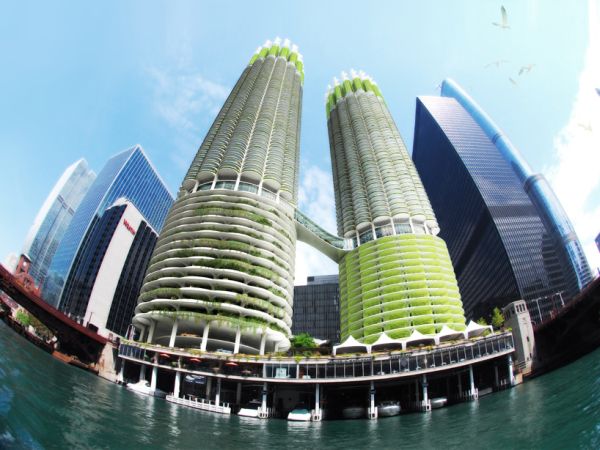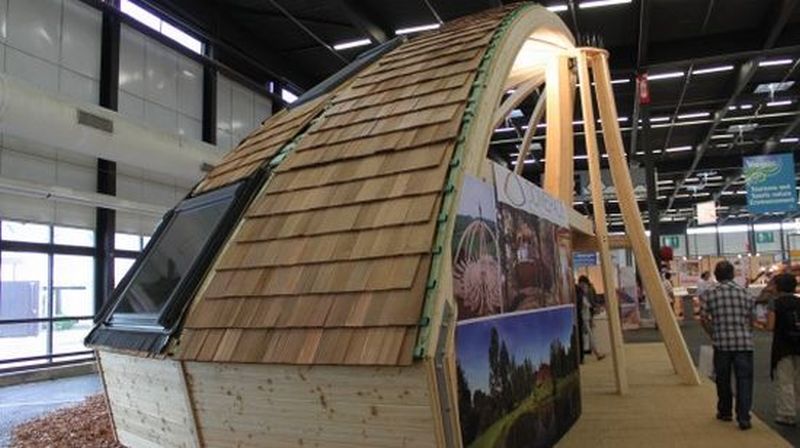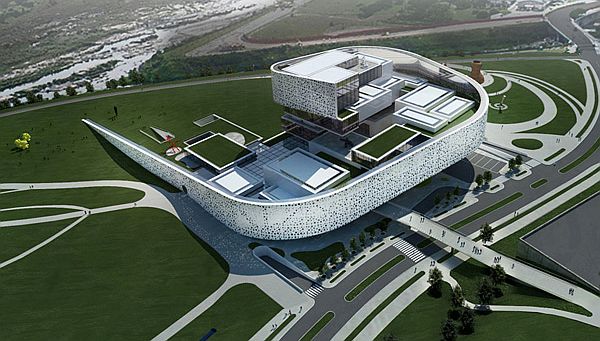The mega structure
The concept design by Paris-based Influx-Studio seeks to reduce Chicago’s carbon footprint by exploiting the carbon capturing capacity of naturally available algae. Developed in accordance with the Chicago Action Plan, which aims at 80 percent reduction in the green house gas emission by 2050 from 1990 level, the new design proposes to retrofit the iconic Marina City Towers in the heart of Chicago city with algae green loops based on a new algae green technology integrated with some other emerging green technologies. This will convert the entire area into a robust CO2 scrubbing system and cause a huge reduction in the carbon foot print. The algae green loops are in the form of a modular system of algae tubes running around the top circumference of the Marina City Towers and one of the parking ramps. These algae tubes will absorb solar radiation to produce bio-fuel. The parking ramp will be converted into gravity-driven phytoremediation devices for treating waste water for reuse. Also, the semicircular balconies of the towers will be equipped with photovoltaics and solar thermal-panels for generating supplementary clean energy and also for vertical farming. In addition, the entire system will be integrated with advanced bio-reactors for the production of clean energy, water treatment plants, and bio-engineering-based plants for the production of food to make the entire area self-sufficient.

What makes it mega?
The Marina City Towers in the Loop of Chicago is home to thousands of people and businesses. It was one of the most innovative buildings constructed way back in 1964 and promoted as a ‘city within a city’ by the then architects Bertrand Goldberg. The innovation reflected not only in the looks but in the measures taken for better fossil fuel economy during the 60s. Time has changed and the present concept, if introduced, will be no less ‘mega’ than the original construction itself. The architects now have a mammoth challenge to make the Marina City Towers self- sufficient for all the energy requirements. They have to do so by ensuring least emission of green house gases in the air.
Factbox
About the architect
Influx_Studio is a Paris-based design firm founded by Mario Caceres and Christian Canonoco. Since 2008, it has worked for research and design for architecture, landscape, urban and industrial design.
Estimated cost: NA
Purpose: Commercial
Surface Area: NA
Construction Time: NA
Eco Credentials
The entire algae-based system will reduce the CO2 from air with the help of many bio-engineering process. It will do so at three different levels.
1. Direct carbon removal from the air
This will be done by capturing the CO2 from air with the help of techniques like ‘humidity swing’ developed by by Dr Klaus Lackner of Columbia University. The captured CO2 will be used by algae bio-reactor for producing bio-fuels that can be used in vehicles. Also, two carbon scrubbing plants on top of the towers will capture the CO2, filter it and release the oxygen into atmosphere. The residue from the two plants will provide raw material for the biomass production. These plants will be powered by wind turbines placed on the top of the towers.
2. Absorption by vegetal photosynthesis
The algae-based system will directly absorb much of the CO2 from air. It will produce oxygen during photosynthesis and also used for the production of bio-fuel. For this, the modular algae tubes will be used on the top of the tower and in the parking ramps. The designers have also planned to remodel the existing parking space in accordance with new compact electric and bio-fuel-based cars. Another parking ramp will be remodeled into a phytoremediation garden that will deploy a 2 Km filter layout with the help of natural gravity for producing recycled water. This will feed up to 1 hectare of vertical farming space created along the semicircular balconies.
3. Reduction by energy saving
The third method proposed for the reduction of green house gas emission aims at production of electricity from renewable sources like the sun and the wind. This will reduce the dependence on fossil fuels for power. For this, semicircular balconies of the towers will be equipped with photovoltaic thermal panels.
Apart from the above, the plans for vertical farming will ensure people’s participation for the overall goal of CO2 reduction. It will also provide them with organic food.




